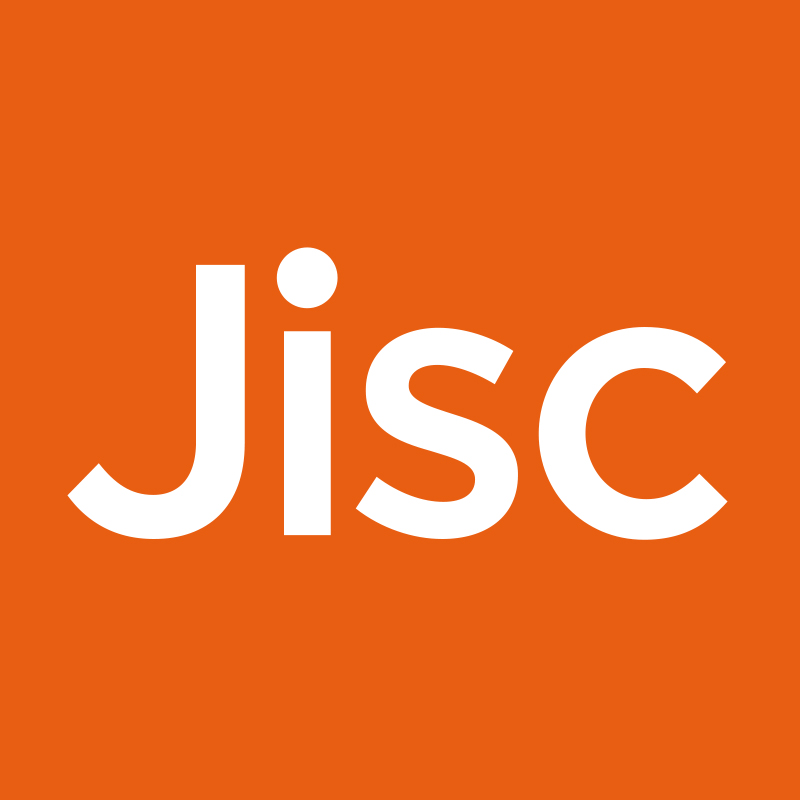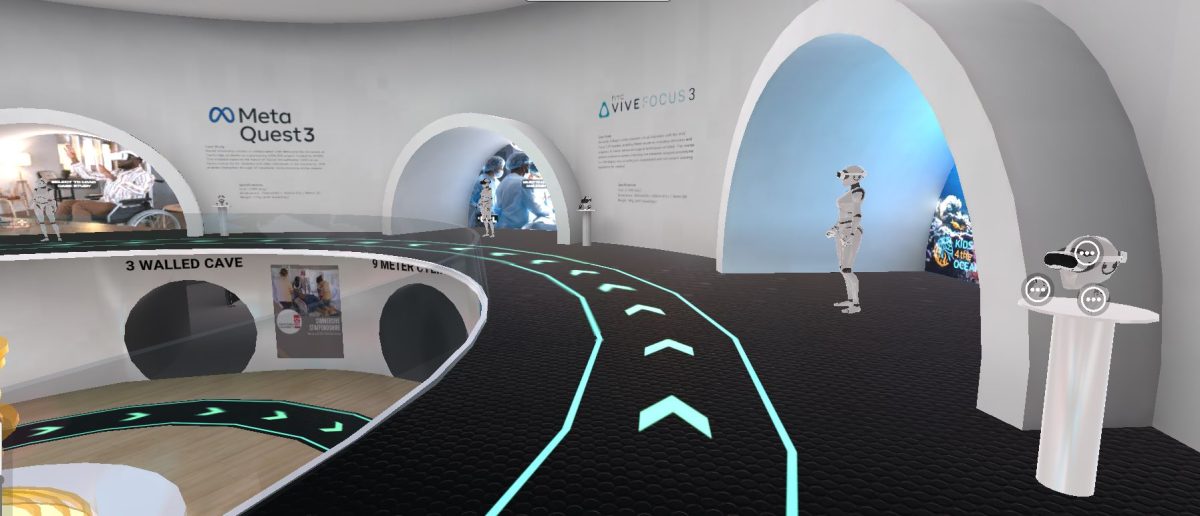In our previous blog, “Designing the Virtual Innovation Hub: From Concept to Reality” we explored the creative process behind the Virtual Innovation Hub development, from its design principles to the collaborative efforts that shaped its immersive, interactive environment. Now, in this fourth instalment of our series, we look at the implementation phase—how we brought this ambitious digital 3D proof of concept to life using an agile approach and the lessons we learned along the way.
If you’re just joining us, we recommend catching up on the earlier blogs in this series: “Introducing the Virtual Innovation Hub,” “Why Did We Build It?,”. These posts provide the context and the inspiration behind the Hub.
From Design to Reality: The Implementation Journey
Transitioning from design to implementation is where inspiring ideas meet practical realities. For the Hub, this phase was a balance of technical expertise, creative problem-solving and a strong focus on the all important user experience. We applied an agile approach, structuring our work into six sprints. This allowed us to iterate quickly, include feedback in real time and continuously refine the Hub to ensure it met expectations.
This agile approach was supported by daily stand-ups, retrospectives etc. and the effective use of Miro and Jira to manage workflows, track progress and facilitate collaboration.
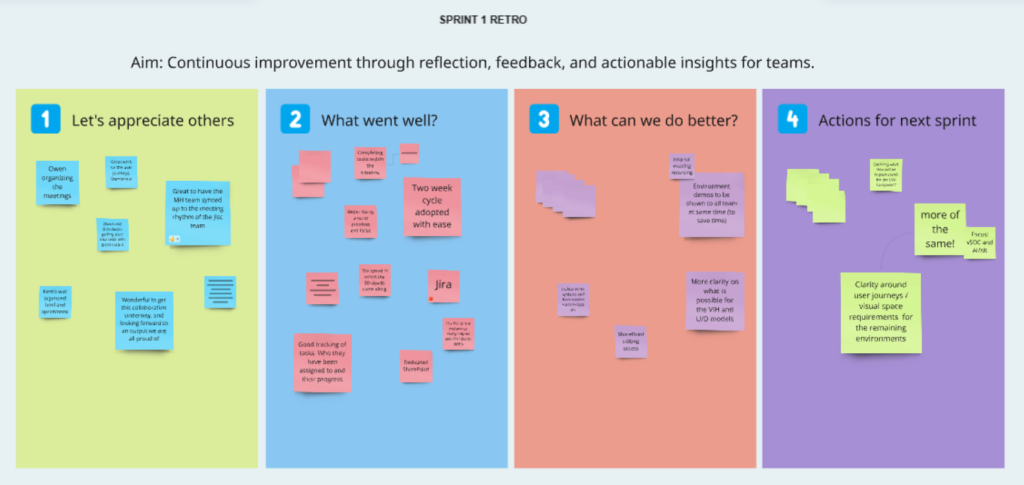
1. Building the Technical Foundation
A strong technical foundation was needed to ensure the Hub could deliver an immersive, seamless experience. We focused on selecting a platform that would support high-quality visuals, real-time interaction, and accessibility across multiple devices. Our focus on creating a space visually engaging whilst being able to stable, scalable and easy to navigate.
In achieving this – we partnered with Metaverse Hub, leveraging their expertise in virtual world development.
By selecting Metaverse Hub, we ensured that the Hub would be:
- Easily accessible to a wide audience
- Engaging and interactive rather than a static experience
- Built on a stable, high-quality 3D platform
- Customisable and future-proof to align with long-term goals
This collaboration provided the strong technical foundation needed to bring our vision to life to create a dynamic, user-centred virtual space that fostered meaningful engagement. innovation and collaboration.
2. Bringing the Zones to Life
We divided the into four zones, each one addressing key themes and challenges in HE and FE.
Zone 1: The Utopian/Dystopian Campus
- Immersive Visuals: Developed using advanced 3D rendering techniques to create an interactive environment accessible directly from a web browser showing in realistic detail in the utopian and dystopia campuses.
- User Engagement: Clickable hotspots were used that triggered multimedia content, allowing users to explore different scenarios within each campus.
- Data Integration: Real-world sustainability data was added to this zone in addition to projections to make the scenarios immersive and informative.
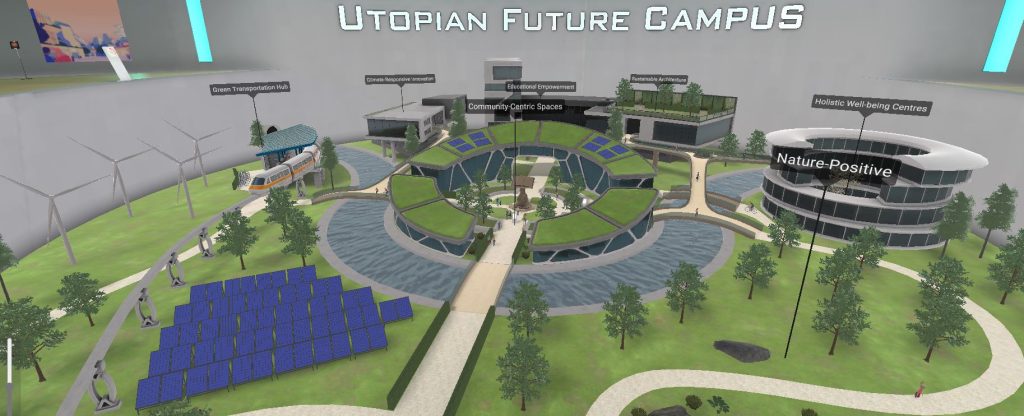
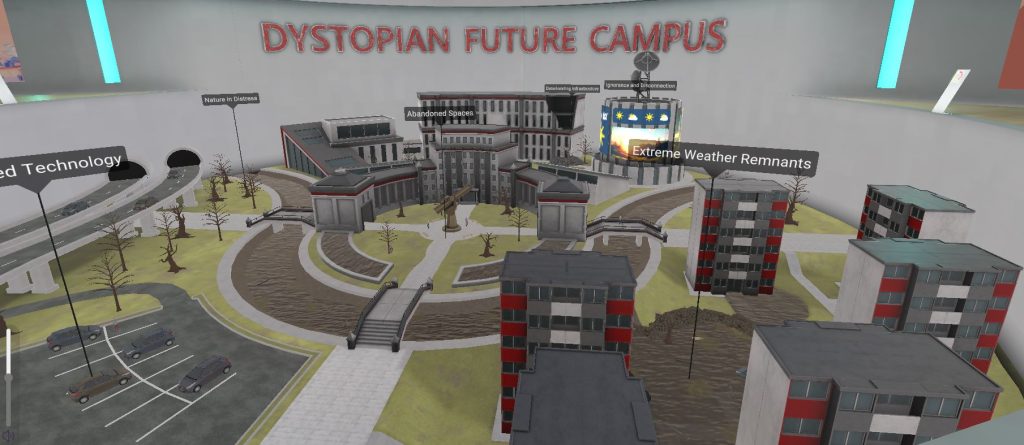
Zone 2: The Extended Reality (XR) Showroom
- 3D Asset Integration: Used to create high-fidelity 3D models of popular VR headsets and immersive classroom solutions. This allowed users to explore this tech with a strong sense of realism.
- Content Accuracy: Through collaboration with Jisc’s XR community we worked to ensure each model had a FE and HE case study showing impressive real-world applications, from medical to sustainability.
- User Navigation: Guided walkthroughs, strong visuals and interactive information panels allowed for self-paced learning.
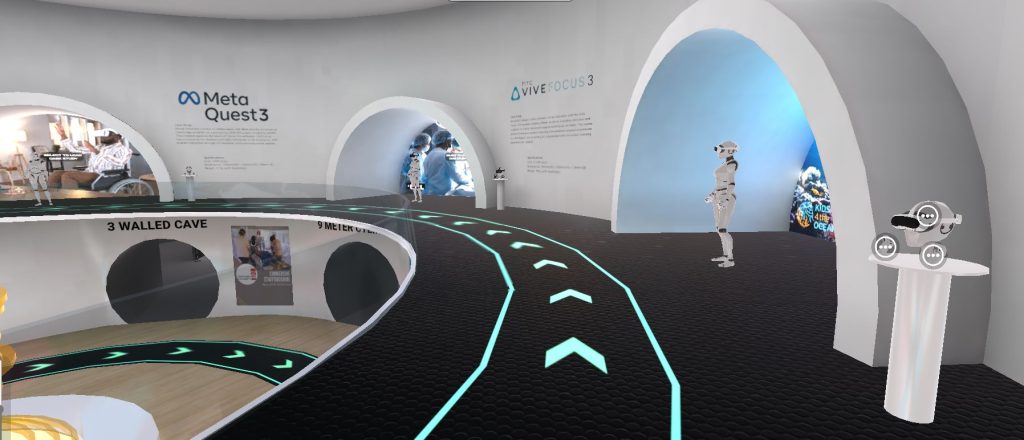
Zone 3: Cybersecurity
- Simulation & Interactivity: This was important that this zone had a strong narrative where users experienced cybersecurity threats and their consequences with effective use of colour and audio.
- Real-World Case Studies: We worked with the Jisc cyber team to ensure that we recreated actual cybersecurity incidents to highlight risks and best practices.
- Gamification: Through the use of gamification, we allowed this zone to engage users more effectively by encouraging participation, fostering learning and enhancing overall interaction.
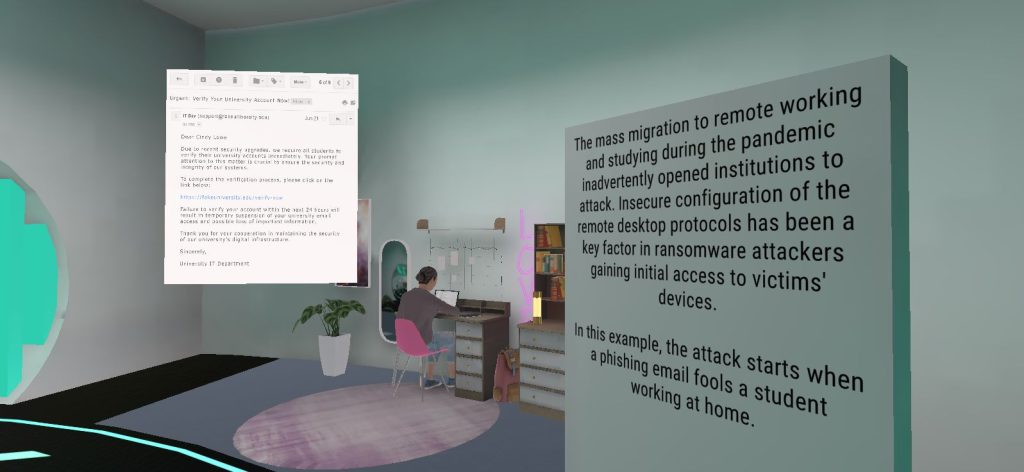
Zone 4: The Virtual Innovation Lab
- Digital Twin Technology: Modelled on Jisc’s real-world innovation hubs in our Bristol office we offered users the opportunity users to explore virtual prototypes of emerging technologies we are excited about.
- Tool Integrations: This zone effectively used interactive widgets allowing users to test out AI tools, data visualisation software and simulation environments.
- Collaboration Features: We designed a number of spaces where users can leave all important feedback, and to add their ideas and as the opportunity to join live demonstrations.
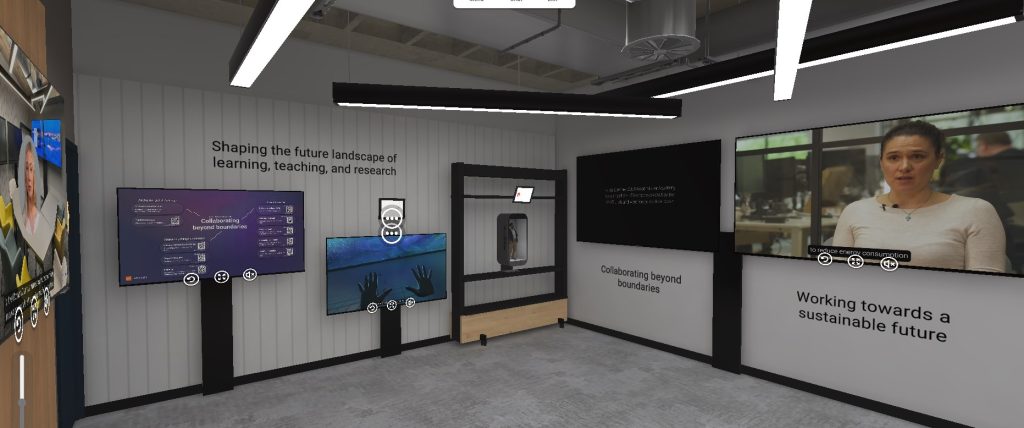
3. Iterative Testing and Refinement
By adhering to agile best practices, we established a cycle of building, testing and refining to ensure that each iteration moved us closer to delivering the most optimal user experience.
- User Testing: Conducted at the conclusion of each of the six sprints, enabling us to validate usability and performance.
- Feedback Loops: Facilitated through Miro and Jira, allowing for swift iterations and enhancements.
- Retrospectives: Held after every sprint to evaluate successes, identify areas for improvement, and determine actionable steps for refinement.
4. Launching the Hub
To ensure a smooth rollout, we prioritised:
- User Onboarding: A structured process with guides, tutorials and live demonstrations.
- Community Engagement: Encouraging users at DigiFest 24 to contribute feedback and share their experiences.
- Continuous Improvement: A commitment to ongoing refinement based on feedback and user needs.
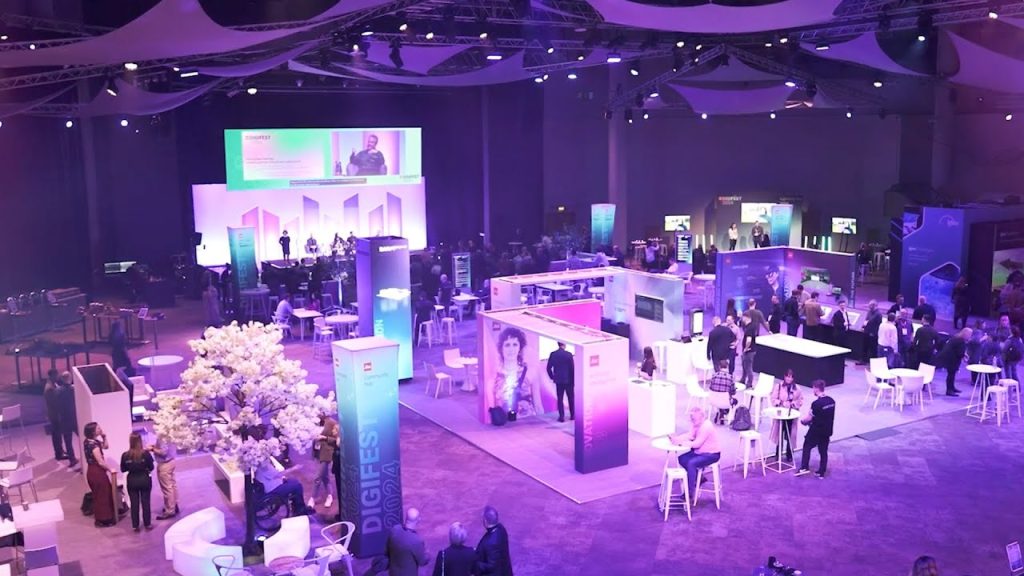
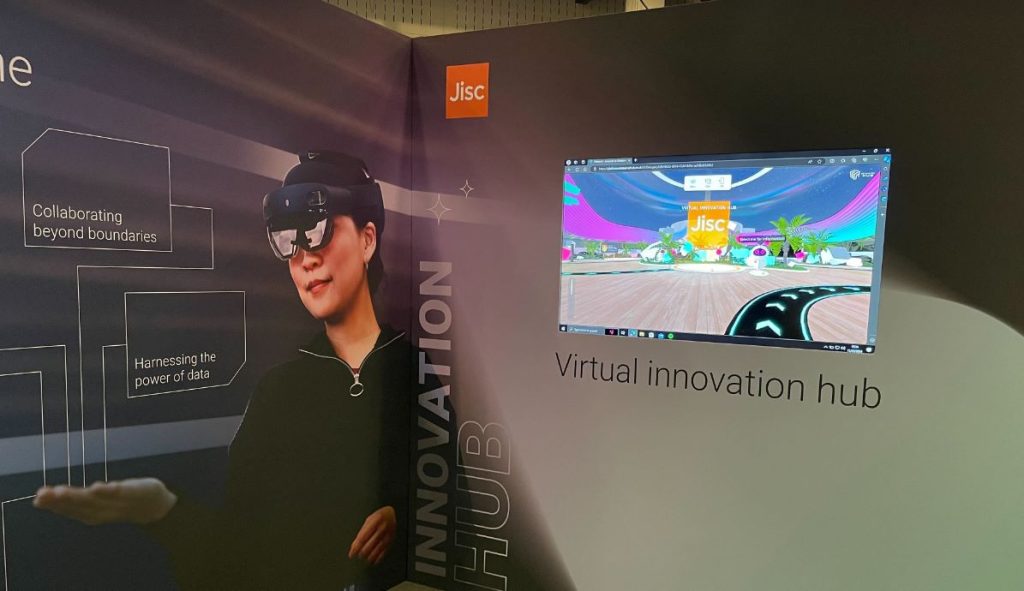
Lessons Learned
Collaboration is Key
The success of the Hub was a testament to effective collaboration with Metaverse Hub. From the outset we built a strong working relationship and through an agreed way of working we demonstrated genuine commitment to improvement, mutual trust and shared goals.
User Feedback is Invaluable
Integrating user insights in each sprint cycle allowed us to refine the Hub ensuring a more intuitive and engaging experience. We made a conscious effect to allow users the opportunity to feedback generally or specific to each of the four zones.
Flexibility is Essential
Agile principles kept us adaptable—when challenges arose, we pivoted quickly, and thanks to the number of people working on this project in Jisc and Metaverse Hub, we had the expertise and flexibility to address issues promptly.
Looking Ahead
As we look to the future, we’re excited to explore new possibilities for immersive virtual environments in education. We invite you to experience the Hub for yourself or see the video below and discover how it can inspire collaboration, creativity and innovation in your work.
